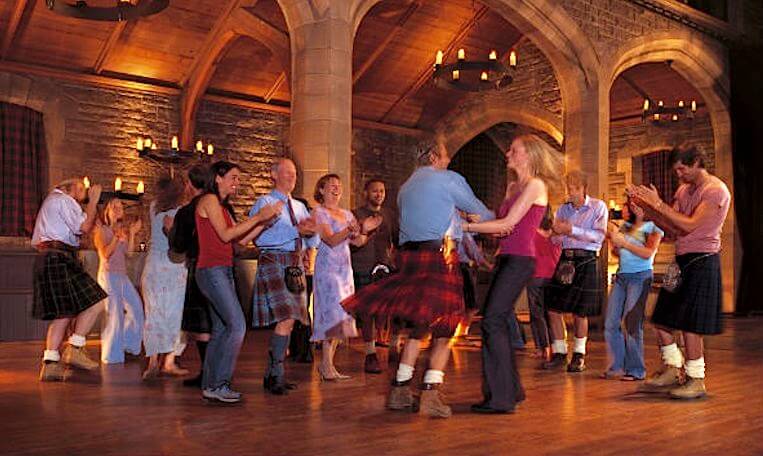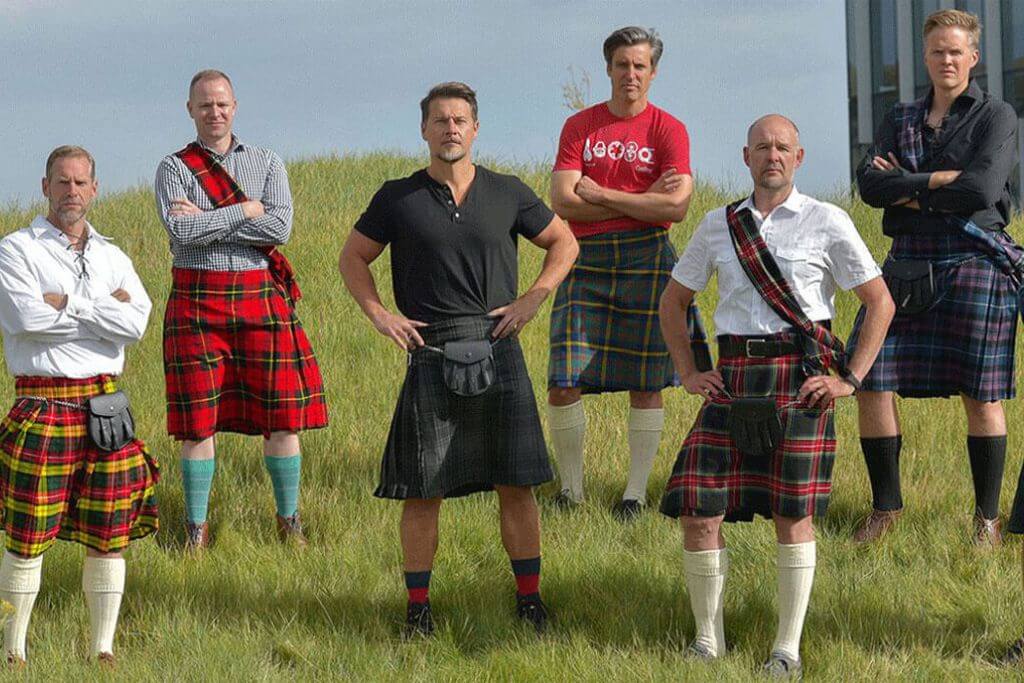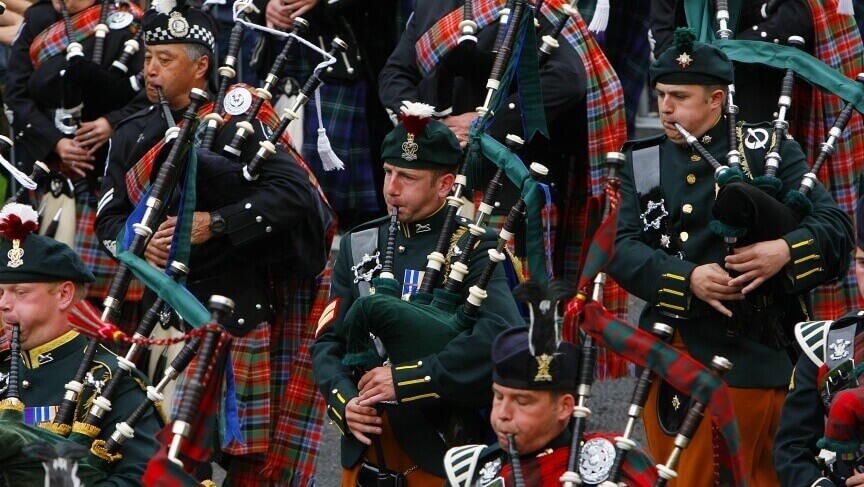Do you think Scottish culture is all about haggis and bagpipes? Consider again!
If you’re considering a vacation to Scotland, here are 10 fantastic activities that will offer you a better grasp of the country’s history and culture.
TASTE SCOTTISH WHISKEY IN SPEYSIDE

Whisky is just one of many Scottish traditions, but for tourists, it’s one of the most accessible and enjoyable ways to immerse themselves in Scottish culture. The Speyside Distilleries are by far the top distilleries.
In terms of variation, single malt Scotch is more like wine than mass-produced whiskey. In Scotland, there are many whisky connoisseurs. Each single malt is produced at a different distillery and has distinct aromas and colors based on the process of distillation.
Speyside has an abundance of high-quality water, which explains why so many whisky distilleries have been established there. Speyside whiskey is often well-balanced, with sweet and flowery overtones. Speyside whiskies with a medicinal, smokey peat flavor are also available.
Speyside whisky tours are easily accessible from Inverness. Day tours and multi-day whiskey trail adventures to Speyside are even available from Edinburgh and Glasgow.
GO TO A CEILIDH

Close to the Christmas holidays, children in Scotland are taught how to dance the ceilidh in gym class. For most, it was a mentally traumatic experience, but one that most Scots are grateful they learned at a young age. This means that the stereotypical image of Scottish ceilidh dancing is extremely widespread.
A ceilidh was traditionally an indoor social gathering. Families would congregate in one home during the long, dark winter hours to recite poetry, tell stories, sing songs, and perhaps dance. Modern ceilidhs forego the poetry, storytelling, and singing in favor of only dancing.
Ceilidh dance is common at Scottish weddings, yet it is simple to master. A ceilidh is an excellent chance to meet new people while immersing yourself in one of Scotland’s most adored traditions.
The best approach for tourists to attend a ceilidh is to go to one of the local ceilidh venues. Tourists should not feel intimidated since they do not know the dances. Before each ceilidh, the band or host will teach the steps and, in most cases, include a practice round.
Ceilidhs aren’t about perfecting every dance; they’re about having a good time, and tourists won’t be the only ones bumbling around trying to recall the moves. Nobody cares if you forget what you’re doing.
Sloans in Glasgow and the Burly Ceilidh Club in Edinburgh are two prominent Friday night venues. If you’re visiting Glasgow with children and want to take them to a traditional ceilidh, there are a few bars that let children inside until 8 or 9 p.m.
USE A KILT ONLY FOR HOGMANAY OR A WEDDING

A kilt is synonymous with Scottish culture. Scots aren’t picky about who wears a kilt, and it’s not uncommon to see non-Scots in kilts during weddings and Hogmanay. Hogmanay is the Scottish name for New Year, which is celebrated even more fervently than Christmas.
Because of its history and symbolism, the kilt has strong cultural ties to Scotland. Each clan had its unique tartan in the past. Even now, descendants of Scottish clans prefer their ancestors’ kilts above others. This does not preclude anyone else from wearing that clan’s kilt.
The kilt is a symbol of Scottish pride. This is due in part to the fact that the kilt was outlawed in 1746 following the failed Jacobite revolt. During the revolt, Scottish Jacobite supporters fought in kilts, which were commonly used as battle uniforms.
Following the uprising, the English imposed that any Scot not serving in the British Army who wore a kilt be imprisoned for six months or deported away for seven years.
The purpose of prohibiting the kilt was to diminish the emblem of Scottish rebellion. This, however, did not work, and what was originally worn as an everyday clothing by workers and as a combat uniform to identify tribes swiftly became a national symbol of Scottish identity and patriotism that has outlasted its 35-year prohibition.
All Scottish cities offer kilt hire shops, and you can even order a kilt online.
A serious aside: it should go without saying, but you should never pull or stare up another person’s kilt. This is a serious offense and constitutes assault.
ON THE ROYAL MILE OR BUCHANAN STREET, LISTEN TO BAGPIPERS

Piping is still a popular form of cultural expression in Scotland today. The origins of the bagpipes are still debated; popular ideas place them in Ireland or as far away as Egypt. Whatever its origins, a large, loud instrument was destined to be popular in Scotland.
As Scotland’s national instrument, bagpipes are culturally significant. Highland battalions often had their own pipers during times of war. These shock soldiers were frequently dispatched first to terrify the adversary. The sheer volume of the pipes, combined with the harsh, rural-dwelling highlanders’ size, typically did the trick.
Bagpipes now play an essential ceremonial role at weddings, funerals, graduations, and other important events.
Bagpipe music is easily available to tourists. When wandering down the Royal Mile and Princes Street in Edinburgh, travelers can witness four or five pipers on any given day. In Glasgow, there are always at least two pipers busking on Buchanan Street.
It’s fantastic to take a ‘wee’ seat, relax for a moment, and listen to the wonderful and magnificent sounds of the bagpipes rolling over the city.
TAKE PART IN THE STONEHAVEN HOGMANAY FIREBALL CEREMONY
Stonehaven is a fishing town near Aberdeen. There are plenty of things to do in Stonehaven all year, but if you have the opportunity, you should attend the Stonehaven Fireballs Ceremony.
In Scotland, fireball ceremonies have been practiced for millennia. They are said to be a pagan ritual of purification and destruction. They’re popular in Scotland because they remind people of the country’s pre-Christian history.
The Stonehaven ceremony is the most well-known of its sort, and thousands of people attend each year. During the ritual, residents roll massive burning hay balls down the main street and into the sea.
This festival provides travelers with a fantastic opportunity to experience Scottish tradition at its finest. The event is also entirely free!
DO NOT GO HIKING ON BEN NEVIS.
Hill walking is a popular cultural activity in Scotland. Nowhere else on the planet are so many high-quality hikes so freely accessible to the general public.
The Highlands, with their peaks and lochs, glens and waterfalls, ridges and plateaus, are what Scots regard to be the’real’ Scotland.
Many Scots participate in’munro bagging,’ which is the process of climbing all of Scotland’s Munros. Munros are Scottish mountains that rise above 3,000 feet and number 282.
Munro bagging is also possible for tourists who can rent a car. Tourists in Glasgow or Edinburgh are seldom more than one or two hours away from a good trek. The majority of Scottish Munros are easily accessible and require no more than 8-10 hours to conquer.
When trekking in Scotland, tourists should always make sure they are appropriately suited because the weather can change quickly. A map, compass, and knowledge of how to use them are required. Between October and March, crampons and an ice axe are also required.
When it comes to hiking mountains in Scotland, most people think of Ben Nevis. Ben Nevis is the highest peak, but it is not the most beautiful. Instead, choose from a wide range of Munros to climb, such as Ben Lomond, Ben Macdui, Liathach, or Bidean Nam Bien, to mention a few.
If you enjoy trekking, take a look at this adaptable schedule for hill walking in Scotland.
TAKE A LOOK AT ULLAPOOL’S CREEL NET CHRISTMAS TREE
The creel net Christmas tree at Ullapool, a semi-busy tourist town on Scotland’s northwest coast, is one of the country’s true hidden cultural gems.
The town, like many of Scotland’s coastal settlements, is a working fishing village. Their Christmas tree is made up of no fewer than 340 creels, which are normally used to catch lobsters.
This rite pays homage to Scotland’s strong cultural ties to the water. Outside of the industrial center belt, the majority of Scotland’s rural population subsisted on farming or fishing.
However, this is a relatively new custom, dating back to 2016. Ullapool is open to visitors all year. The village is an excellent starting point for exploring Wester Ross, Sutherland, and Torridon.
VISIT THE WESTERN ISLES FOR ISLAND HOPPING
There is no better way to learn about Scottish culture than to visit the Western Isles.
The Western Isles are perhaps the only spot on the planet where tourists may stroll into a pub or other social environment and hear inhabitants chatting in Gaelic.
It is believed that 52% of the people in Na h-Eileanan Siar (the Outer Hebrides) speak Gaelic well. This contrasts with the number of Gaelic speakers in tourist hotspots like Glasgow and Edinburgh, where the language is spoken by less than 1% of the population.
Aside from the prevalence of Gaelic, the Western Isles are brimming with Scottish traditions. It is critical to recognize that most Scottish culture is a blend of Scots, Norse, and Celtic (Irish).
Many Norsemen originally arrived in Scotland on the Western Isles, and it was also the principal landing site for Celts arriving from Ireland. As a result, the area has a lively Celtic and Norse past, which is represented in the music, art, and easily accessible Celtic jewelry.
Recent government action has reduced ferry prices, making the Western Isles more accessible to visitors. Tickets for multiple ‘island hopping’ journeys start at £7.25.
EXPLORE THE UNESCO WORLD HERITAGE SITES IN SCOTLAND
Scotland has several Neolithic, Celtic, Medieval, Pictish, Roman, and modern cultural sites. A few have been nominated, and as of this writing, Scotland has six designated UNESCO World Heritage sites.
TRY SCOTTISH FOOD – YOU MIGHT BE SURPRISED (OR DISAPPOINTED).
To say the least, Scottish cuisine is intriguing. Yes, haggis is always available, and tourists looking to do their study can acquire fried Mars Bars. However, you should also look into some of the other options.
Culturally, Scotland has welcomed massive immigration over the last few centuries. Cities such as Glasgow attracted tens of thousands of Irish and Italian immigrants in the nineteenth and twentieth centuries, as well as Indian and Pakistani migrants from the mid to late twentieth century.
Scotland’s membership in the European Union has also resulted in the arrival of hundreds of thousands of European nationals.
All of this has contributed to a culture of inclusivity that Scots are quite proud of, as well as a cuisine that is unparalleled in terms of variety.
Curry is well-known throughout the country. The dish of chicken korma is claimed to have originated in Glasgow. In addition, most localities have at least one fish and chip business. There are also Polish, German, and Hungarian eateries across the city. Not to mention the availability of French and Italian cuisine, as well as selections from Mongolia and Libya.
The menu focuses primarily on Scottish cuisine, with a strong emphasis on seafood, hearty beef stews, and gamey meat. The most well-known items are haggis and the deep-fried Mars Bar.



